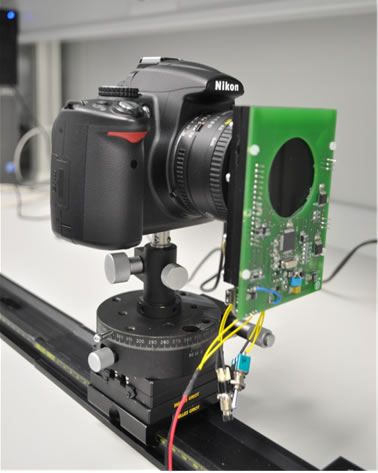Introduction
This page contains information on the Research Project TIN2010-15137 "Modelización e inferencia bayesiana en fotografía computacional. Diseño de prototipo de cámara fotográfica para exposición múltiple y apertura codificada", funded by the Ministerio de Ciencia e Innovación de España from 2011 to 2013 with a budget of 26.700,00 €.
The research team consists of 6 doctors and an undergraduate studend from the University of Granada with extensive experience in project theme and a doctor from the Institute of Astrophysics of Andalucia.
This page will provide information on the project results and publications that derived from it.
For a quick start on what is Computational Photography and how it relates to other research areas see the video lecture at NIPS (From Image Restoration to Compressive Sampling in Computational Photography. A Bayesian Perspective).
If you are interested in using the prototype developed for the project please check this page.
Summary
Computational Photography is a new and exciting area of research and development whose goal is to overcome the limitations of conventional photography exploiting synergies between image processing, specific optics, lighting and sensors.
The set of problems included in the field of Computational Photography is very broad. In this project we aim at working, within the field of Computational Photography, on the following problems:
- To obtain clear pictures combining images taken with different exposure times and/or different sen-sibilities.
- To increase the depth of field and to segment an observed image based on depth. This will be achieved by developing the hardware and software needed to implement coded aperture.
- To obtain the light field of a scene using programmable coded aperture, by developing a laboratory prototype of the hardware and software needed to implement such aperture.
We will conclude with the implementation of a prototype of programmable coded aperture to be inserted in the lens of current digital cameras. To solve the above mentioned first problem, the processing of images taken by current cameras will be needed. The second one will be solved by introducing only a mask inside an existing lens and processing the observed image. To solve the third one will require inserting a programmable device in the lens and also the processing of the captured images. This device will allow us to obtain images as taken by current cameras, as well as, when using a mask. Consequently, we are proposing three problems which constitute an evolution -not a breach- of the design of current digital cameras. To carry out the project, a multidisciplinary team is formed. Its members have experience in Bayesian image processing, Optics and Electronics to be utilized in the project.
Objectives
Working in the field of Computational Photography, the project objectives are developing software and hardware that allow the incorporation of the following features in digital cameras:
- Obtain sharp images combining images acquired with different exposure times and/or different ISO sensitivities.
- Increase the depth of field and obtain a depth segmentation of an image, developing the hardware and software needed to implement the coded aperture.
- Get the light field of a scene using programmable coded aperture developed a laboratory hardware prototype and the software necessary to implement it.
- Implement a prototype of programmable coded aperture, installable on a photograhic lens of a commercial camera.
Scientific Results
The project is producing results in different aspects:
- Computational Photography results have been scientifically contrasted in the project publications.
- A camera prototype has been developed.
- This website has been developed to disseminate the results of the project.
